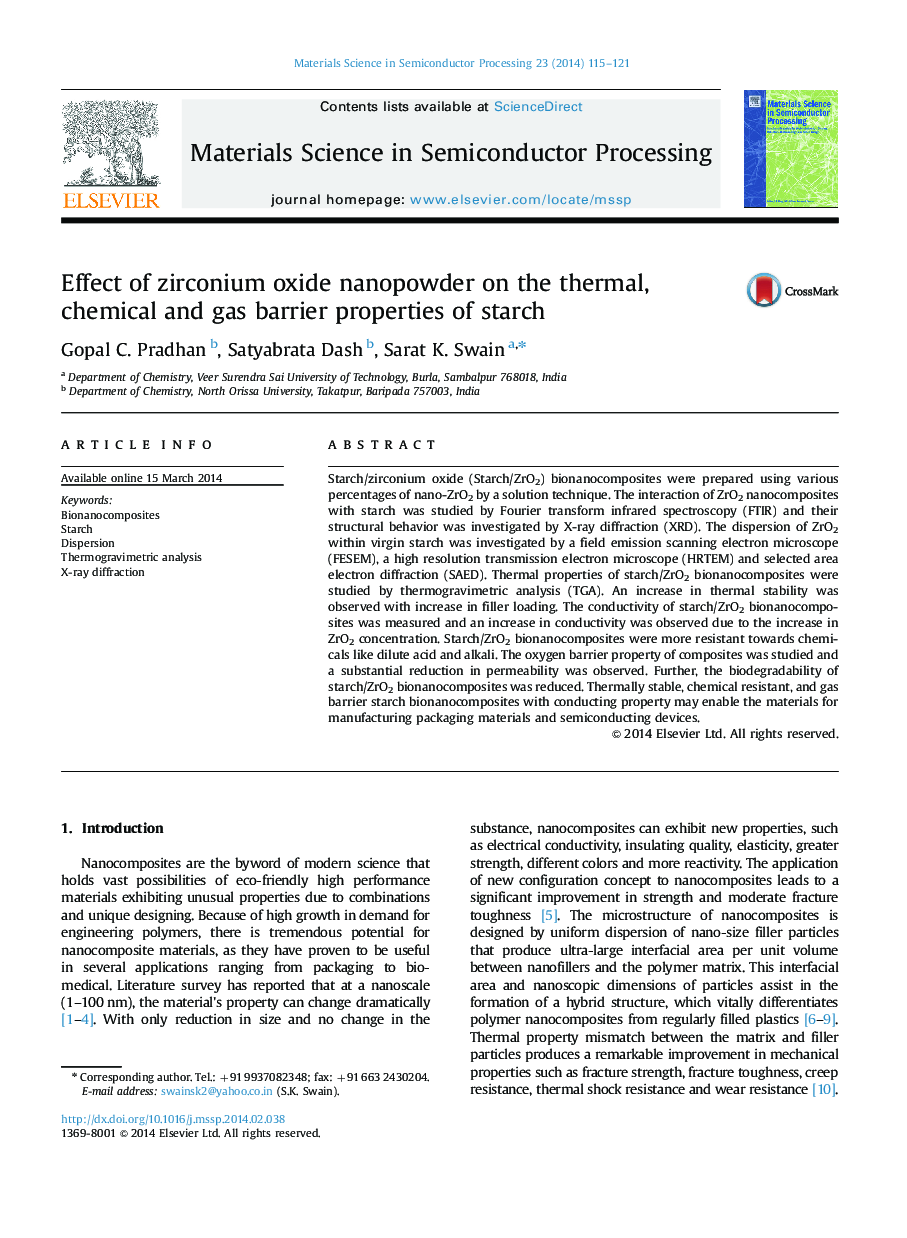| Article ID | Journal | Published Year | Pages | File Type |
|---|---|---|---|---|
| 726668 | Materials Science in Semiconductor Processing | 2014 | 7 Pages |
Starch/zirconium oxide (Starch/ZrO2) bionanocomposites were prepared using various percentages of nano-ZrO2 by a solution technique. The interaction of ZrO2 nanocomposites with starch was studied by Fourier transform infrared spectroscopy (FTIR) and their structural behavior was investigated by X-ray diffraction (XRD). The dispersion of ZrO2 within virgin starch was investigated by a field emission scanning electron microscope (FESEM), a high resolution transmission electron microscope (HRTEM) and selected area electron diffraction (SAED). Thermal properties of starch/ZrO2 bionanocomposites were studied by thermogravimetric analysis (TGA). An increase in thermal stability was observed with increase in filler loading. The conductivity of starch/ZrO2 bionanocomposites was measured and an increase in conductivity was observed due to the increase in ZrO2 concentration. Starch/ZrO2 bionanocomposites were more resistant towards chemicals like dilute acid and alkali. The oxygen barrier property of composites was studied and a substantial reduction in permeability was observed. Further, the biodegradability of starch/ZrO2 bionanocomposites was reduced. Thermally stable, chemical resistant, and gas barrier starch bionanocomposites with conducting property may enable the materials for manufacturing packaging materials and semiconducting devices.
